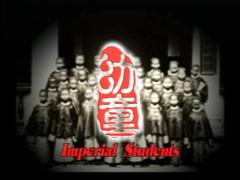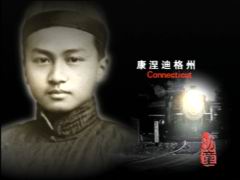Source: CCTV.com
08-14-2006 15:40

More than a century ago, the Imperial Government of China sent the very first delegation of students abroad. Between 1872 and 1875, the Qing government dispatched 4 groups, in total 120 students, to America. Their average age was only 12. Hence history remembers them by a common title-the Chinese Boy Students.
These young Chinese students were sent to the other side of Pacific 130 years ago, to a young republic founded less than 100 years earlier, to embark on their expected 15-year long overseas study.
In the shortest time possible, they overcame the language barriers and soon prevailed in academic achievement. Meanwhile, they rapidly adjusted themselves to the foreign culture and soon took off their long, Chinese gowns and were often seen on sports fields.
They were students accepted into Harvard, Yale, Columbia, MIT; they were neighbors to Mark Twain; and they were once cordially received by the American President Grant. As the world saw dramatic changes, they were sent to the very front of the Industrial Revolution. However, as nearly half of the students were beginning their tertiary education, the Qing Empire abruptly terminated this project.
These students later became the precursors of China's modern mining, transportation, and communications industries. They were the first presidents of Tsinghua University and Tianjin University, the first diplomats, and the first premier of the Republic of China. After they returned home, they went through the ups and downs of late Qing Dynasty and witnessed the vicissitudes of modern China.

Stories of the boy students sent to America are like fragments of a precious piece of porcelain, scattered over America and China, almost lost for more than a century. They were left in the cities where the students used to live, in the high schools and colleges they attended; and the local historical societies and public libraries; they persisted in the blood of the students' descendants and in the memories of the host American families. We have collected the debris of history-pictures, letters, diaries, report cards, clothes, press clippings, to patch together a bygone period of Sino-American history from more than 100 years ago.
One person is key to the stories of all these children. He is the first Chinese graduate from a prestigious American university-- Rong Hong.
“I graduated from Yale University in 1854, but it was not till 1872 that the first delegation of students was sent to America. What happened in the meantime was 18 years of uncertainty and prolonged waiting.”
In 1909 Rong Hong wrote his autobiography, My Life in China and America, lending us a view into the stories of China's first official delegation of overseas students. Some contend that, without Rong Hong, China could have sent students abroad, but then, the date would have been much later and there would not have been the vision of sending such young students abroad. It was the persistence and vision of Rong Hong that brought about this unprecedented event.
“I was born in 1828, in a small village called Nanping in Guangdong, China, only 4 miles from Macao.”
Beginning in the 17th century, foreign businessmen and missionaries began to appear in Macao, thus opening a window to the outside world.
When he was seven years old, Rong Hong was sent by his parents to a school in Macao run by a missionary-Mrs. Gutzlaff
“It has always been a mystery to me why my parents should take it into their heads to put me into a foreign school, instead of a regular orthodox Confucian school, where my brother much older than myself was placed. Most assuredly such a step would have been more in play with Chinese public sentiment, taste, and the wants of the country at large, than to allow me to attend an English school. [from My Life in China and America]”

